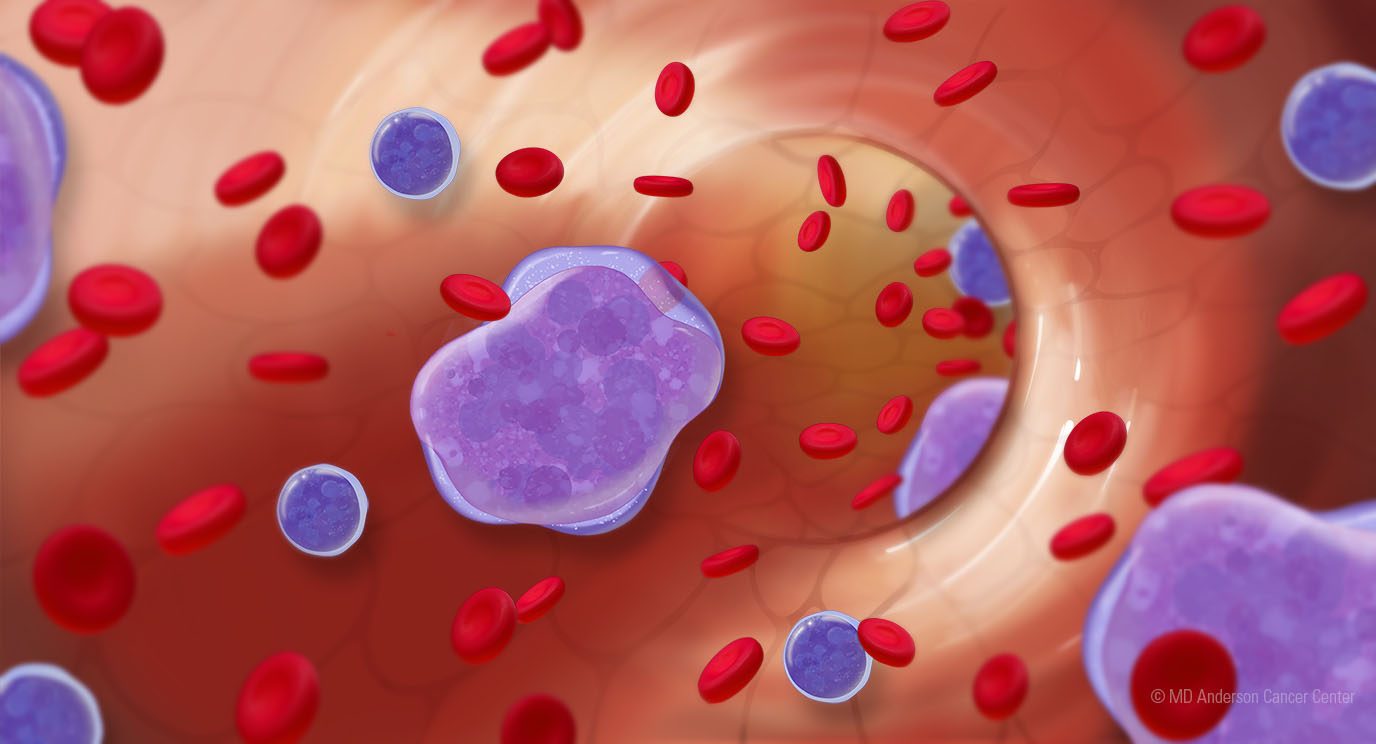request an appointment online.
- Diagnosis & Treatment
- Cancer Types
- Lymphoma
Get details about our clinical trials that are currently enrolling patients.
View Clinical TrialsLymphoma is a general term for cancers that develop in the lymphatic system, which is part of the body’s immune system.
Lymphoma is a general term for cancers that develop in the lymphatic system, which is part of the body’s immune system.
The lymphatic system carries disease-fighting white blood cells throughout the body. It includes:
- Lymph: Fluid that carries lymphocytes, a type of white blood cell, through the body in a network of lymph vessels, which are like tiny veins. Lymph helps fight against infection and cancer.
- Lymph nodes: Tiny, bean-shaped masses found in several parts of the body, including in the underarm, pelvis, neck, abdomen and groin. They filter lymph and store white blood cells to help the body fight disease.
- Spleen: An organ on the left side of the abdomen that helps lymphocytes develop, stores blood cells and gets rid of old blood cells.
- Thymus: Located in the chest, this tiny organ helps make and develop lymphocytes.
- Tonsils: Nodes in the back of the throat that store white blood cells.
- Bone marrow: Material in bones that produces blood cells, including white blood cells.
Types of lymphoma
The two main types of lymphoma are Hodgkin lymphoma and non-Hodgkin lymphoma. Each develops from different types of lymphocytes, a type of immune system white blood cell.
- Hodgkin lymphoma usually starts in B lymphocytes. Almost all have abnormal B lymphocytes called Reed-Sternberg cells.
- Non-Hodgkin lymphoma can start from multiple types of lymphocytes, including B and T lymphocytes. Learn more about B cell non-Hodgkin lympoma.
Waldenström’s macroglobulinemia is another type of lymphoma that spreads slowly and is usually controlled easily when diagnosed early.
Symptoms
Lymphoma symptoms vary from person to person. Some patients may have no symptoms for a long period of time.
Signs and symptoms of lymphoma may include:
- Painless swelling of lymph nodes in the neck, groin or underarm. This is often the first symptom of lymphoma.
- Fevers
- Heavy night sweats
- Fatigue
- Loss of appetite
- Unexplained weight loss, often around 10% of the patient’s body weight
- Dry, itchy skin
- A red rash
- Nausea, vomiting or abdominal pain
- Coughing or shortness of breath caused by swollen lymph nodes in the chest
- Headaches, concentration problems
- Confusion
- Weakness in the arms and/or legs
An enlarged liver or spleen, which can cause a feeling of fullness in the abdomen.
These symptoms do not always mean you have lymphoma. However, it is important to discuss any signs with your doctor, since they may signal other health problems.
Some types of lymphoma can be passed down from one generation to the next. Genetic counseling may be right for you. Visit our genetic testing page to learn more.
Indolent vs. aggressive lymphoma
Lymphoma can also be categorized by whether it is indolent or aggressive. This is based on how the cancer cells look under a microscope and how they behave.
- Indolent lymphoma grows slowly. It has few or even no symptoms. Most indolent lymphomas start in B cell lymphocytes. Since indolent lymphomas are slow growing, patients typically have a good outlook. In some cases, doctors recommend the disease is monitored instead of treated.
- Aggressive lymphoma grows more quickly and its symptoms are more obvious and severe. Patients with aggressive lymphomas need immediate treatment.
Both Hodgkin and non-Hodgkin lymphoma can be either indolent or aggressive.
Lymphoma risk factors
Anything that increases your chance of getting lymphoma is a risk factor. These include:
- Biological sex: Lymphoma is slightly more common in males than females.
- Race: Lymphoma is slightly more common in Caucasians.
- Age: Lymphoma is most common in young adults (15 to 40 years old) and older adults (over 55 years old).
- Infection: The risk is small, but some bacteria and viruses may make you more likely to get lymphoma. These include:
- Epstein-Barr virus (EBV)
- Infectious mononucleosis (mono)
- Human immunodeficiency virus (HIV)
- Human T-cell lymphocytotropic virus (HTLV)
- Helicobacter pylori
- Hereditary cancer syndromes: Certain inherited conditions can increase a person’s risk of developing lymphoma. Learn more about hereditary cancer syndromes.
- Family history: If you have a parent, sibling or child with lymphoma, you have a slightly increased risk of developing the disease.
- Living in a farming community. Some studies suggest that certain herbicides and pesticides may play a part in lymphoma, but this has not been proven.
Some types of lymphoma can be passed down from one generation to the next. Genetic counseling may be right for you. Visit our genetic testing page to learn more.

MD Anderson is #1 in Cancer Care

Why choose MD Anderson for your lymphoma care?
At MD Anderson's Lymphoma and Myeloma Center, our goal is to provide the most effective treatments for disease with the fewest side effects possible.
Our doctors have helped advance the treatment of lymphoma in many areas, including the development of new, leading-edge treatments. And we continue to research ways to improve your health and quality of life.
Experience Matters
The Lymphoma & Myeloma Center handles more than 35,000 patient visits each year, making it one of the nation’s most active programs in the world. The doctors, nurses and advanced practice providers at the center specialize only in lymphoma or myeloma. Our physicians use this experience to design a treatment plan that is tailored to you and your disease.
These treatment options include the most advanced therapies, such as proton therapy and CAR T cell therapy. Through our wide range of clinical trials, patients also have access to many treatments that are not available in other places.
Multidisciplinary care
Treatment at the Lymphoma & Myeloma center is truly multidisciplinary. Each patient is cared for by a team of specialized physicians, nurses, physician assistants, dietitians, physical therapists, social workers and many others. They work closely together – and with you – to improve your chances for successful treatment.
After treatment, patients have access to our lymphoma survivorship clinic. This clinic can help catch a cancer recurrence early, when it is most curable. It also allows providers to monitor and manage the long-term effects of cancer and treatments.
And, at MD Anderson you are surrounded by the strength of one of the nation's top-ranked cancer centers. From support groups to physical therapy to integrative medicine care, we have all the support and wellness services needed to treat the whole person – not just the disease.
Treatment at MD Anderson

Featured Articles

Head of Cancer Medicine: ‘MD Anderson is the place I bring...

Second opinion changes course of treatment for marginal zone...

Richter transformation: What chronic lymphocytic leukemia (CLL)...

What is composite remission?

Lymphoma patient finds pain relief with spine jack vertebral...

B-cell lymphoma survivor: I experienced marriage and motherhood,...

Double-hit lymphoma survivor: ‘If I hadn’t gone to MD Anderson,...

Can watery eyes be a sign of cancer?
Clinical Trials
MD Anderson patients have access to clinical trials offering promising new treatments that cannot be
found anywhere else.
Becoming Our Patient
Get information on patient appointments, insurance and billing, and directions to and around MD Anderson.
myCancerConnection
Talk to someone who shares your cancer diagnosis and be matched with a survivor.
Prevention & Screening
Many cancers can be prevented with lifestyle changes and regular screening.
Counseling
MD Anderson has licensed social workers to help patients and their loved ones cope with cancer.
Help #EndCancer
Give Now
Donate Blood
Our patients depend on blood and platelet donations.
Shop MD Anderson
Show your support for our mission through branded merchandise.
